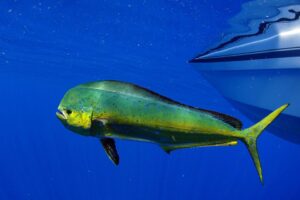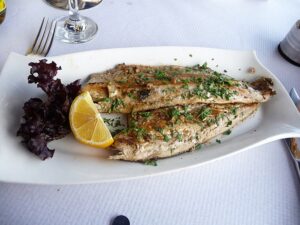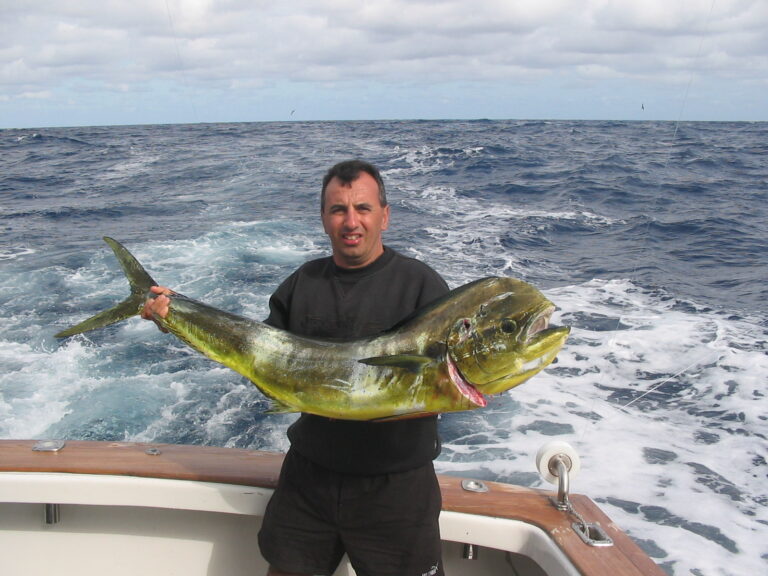Introduction
Lampuka fish, also known as the dolphinfish or mahi-mahi, is a prized species in the Mediterranean, particularly in Malta where it holds a significant place in the local culture and cuisine. With its striking appearance, fast swimming speed, and delicious taste, lampuka is a seasonal delicacy that has been enjoyed for centuries. This article will explore the characteristics of lampuka fish, its cultural importance in Malta, and the best ways to prepare and enjoy this flavorful fish.
What is Lampuka Fish?

Lampuka, known scientifically as Coryphaena hippurus, is a migratory fish species that inhabits warm oceanic waters around the world, including the Mediterranean Sea. While it is commonly referred to as mahi-mahi in many regions, in Malta it is known as lampuka, a name derived from the island’s ancient language.
Physical Characteristics
Lampuka are easily recognized by their vibrant coloration, with bodies that range from bright green to yellow and blue. These colors are most vivid when the fish are alive, but they fade quickly after death. Lampuka has elongated, laterally compressed bodies and a steep forehead, with males typically having a more pronounced head. They can grow up to 4 feet in length and weigh as much as 40 pounds, although most lampuka caught in Malta are smaller.
Habitat and Migration Patterns
Lampuka is highly migratory, traveling vast distances across the open ocean. They are commonly found in warm, tropical, and subtropical waters, and their migration patterns bring them to the Mediterranean during late summer and early autumn. In Malta, the lampuka fishing season traditionally begins in late August and lasts until November, coinciding with the fish’s migration through the region.
The Cultural Significance of Lampuka in Malta

Lampuka holds a special place in Maltese culture, where it is not just a seasonal catch but a symbol of the island’s rich maritime heritage. The annual lampuka fishing season is a time of great activity and anticipation, as local fishermen set out to sea using traditional methods that have been passed down through generations.
Traditional Fishing Methods
One of the most distinctive aspects of lampuka fishing in Malta is the use of kannizzati, traditional rafts made of palm fronds. These rafts are placed in the water to create shade, attracting the lampuka, who prefer to stay in the shadowed areas. Fishermen then encircle the rafts with nets, catching the fish in large quantities.
This method, which has been practiced for centuries, is not only effective but also a reflection of the deep connection between the Maltese people and the sea. The lampuka fishing season is a vital source of income for many Maltese families, and the fish itself is a key ingredient in traditional Maltese cuisine.
Culinary Uses of Lampuka
Lampuka is celebrated for its firm, white flesh, and mild, slightly sweet flavor. Its versatility in the kitchen makes it a popular choice for a variety of dishes, from simple grilled preparations to more elaborate recipes.
Traditional Maltese Dishes
In Malta, lampuka is often featured in traditional dishes that highlight its natural flavor. One of the most famous preparations is Lampuki Pie (Torta tal-Lampuki), a savory pie made with flaky pastry and filled with lampuka, vegetables, tomatoes, and olives. This dish is a beloved autumn specialty, enjoyed by locals and visitors alike.
Another popular method of preparing lampuka is simply pan-frying or grilling the fish with olive oil, garlic, and fresh herbs such as mint and parsley. The mild flavor of the fish pairs well with the bright, fresh flavors typical of Mediterranean cuisine, making it a perfect choice for light and healthy meals.
Modern Preparations

Beyond traditional recipes, lampuka is also well-suited to modern culinary styles. Its firm texture makes it ideal for grilling, and it can be marinated in a variety of sauces, from citrusy marinades to spicy rubs. Lampuka is also delicious when baked or broiled, and it can be served with a wide range of accompaniments, such as roasted vegetables, salads, or pasta.
In addition to its versatility, lampuka is a healthy choice, being rich in protein and omega-3 fatty acids, which are beneficial for heart health and brain function. Its relatively low-fat content also makes it a good option for those looking to maintain a balanced diet.
Sustainability and Fishing Practices
As with many fish species, the sustainability of lampuka is a growing concern, particularly given the pressure on fish stocks from overfishing and environmental changes. In Malta, efforts have been made to manage lampuka fishing sustainably, with regulations in place to limit the number of fish caught and to protect the marine environment.
Fishing Regulations
The Maltese government has implemented several measures to ensure the sustainability of lampuka fishing. These include restrictions on the size and number of fish that can be caught, as well as the types of fishing gear that can be used. There is also an emphasis on preserving traditional fishing methods, such as the use of kannizzati, which have a lower environmental impact compared to more industrialized fishing techniques.
The Role of Consumers
Consumers also play a crucial role in supporting sustainable lampuka fishing. By choosing to buy lampuka that has been caught using traditional, environmentally friendly methods, consumers can help ensure the long-term viability of this important fishery. It is also important to be mindful of the seasonality of lampuka, as eating the fish during its peak season helps reduce pressure on the species at other times of the year.
Lampuka in the Global Market
While lampuka is most closely associated with Malta, it is also enjoyed in other parts of the world, particularly under the name mahi-mahi. The fish’s mild flavor and firm texture have made it a popular choice in international cuisine, from Mediterranean-style dishes to Caribbean and Asian-inspired preparations.
Export and Economic Impact
In addition to its cultural importance, lampuka fishing is an important economic activity in Malta. The fish is not only sold in local markets but also exported to other countries, contributing to the island’s economy. The export of lampuka, particularly to European markets, has helped raise the profile of this fish and introduced it to new audiences.
Conclusion
Lampuka fish, with its rich cultural heritage, delicious flavor, and versatility in the kitchen, is a true treasure of the Mediterranean. In Malta, the annual lampuka fishing season is a time of tradition and community, with the fish playing a central role in local cuisine and culture.
As the world becomes more aware of the importance of sustainable fishing practices, lampuka serves as an example of how traditional methods and modern sustainability efforts can work together to protect a valuable resource. Whether enjoyed in a traditional Maltese pie or a modern grilled dish, lampuka offers a taste of the Mediterranean that is both delicious and meaningful.
By appreciating and supporting sustainable lampuka fishing, we can help preserve this iconic fish for future generations to enjoy, ensuring that its legacy continues to thrive in Malta and beyond.

